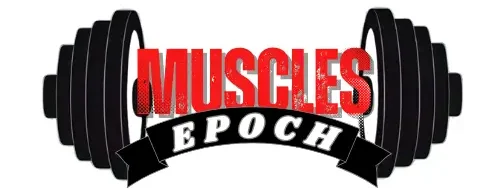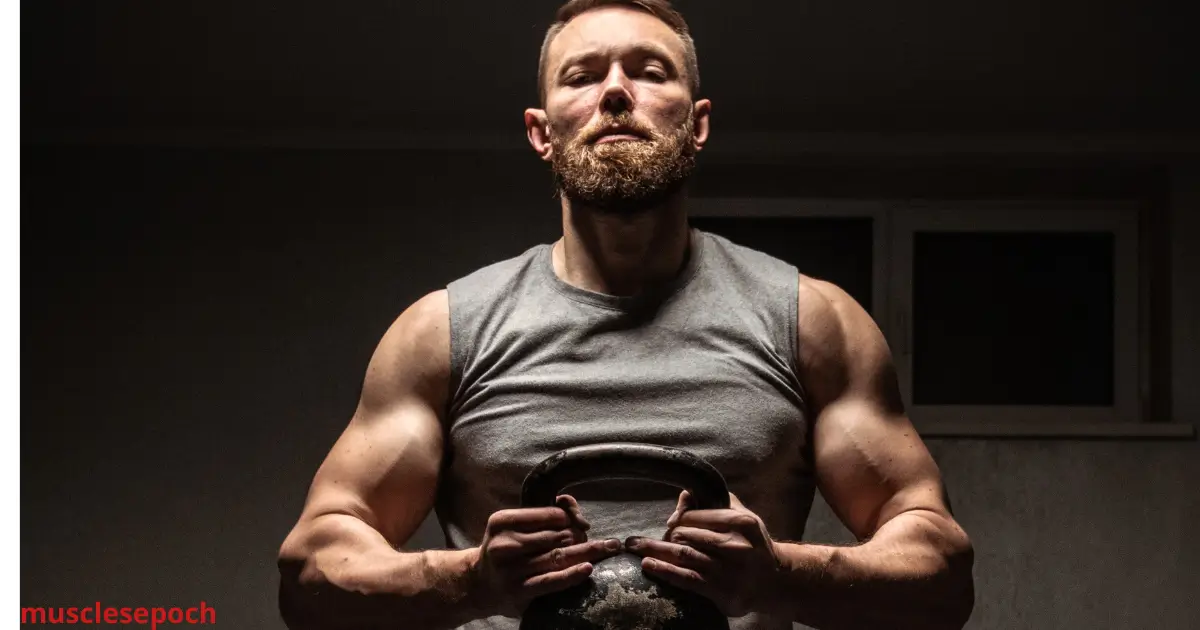Workout for Legs and Arms:If you’re short on time but still want a workout that builds strength and tones your entire body, combining leg and arm exercises into one session is a smart strategy. A workout that targets your lower body (quads, hamstrings, glutes) and upper body (biceps, triceps, shoulders) offers the perfect blend of efficiency and effectiveness. Whether you’re a beginner looking for a simple plan or someone wanting to add functional strength to your routine, this dual focus can help you burn more calories, improve muscle symmetry, and boost overall fitness—all in a single workout.
Why Train Legs and Arms Together?
Ideal for Full-Body Conditioning and Fat Burn
Combining leg and arm exercises in one workout isn’t just convenient—it’s highly effective for full-body conditioning and fat loss. By targeting multiple large muscle groups in a single session, you increase your heart rate, elevate your metabolism, and burn more calories during and after your workout.
Leg movements like squats, lunges, and step-ups work some of the biggest muscles in the body, which require more energy and therefore boost overall calorie expenditure. Pair those with arm-focused exercises like curls, pushdowns, and overhead presses, and you’ve got a routine that keeps your body moving and your metabolism revving.
This style of training also encourages functional strength, which mimics real-life movements and improves coordination, balance, and stamina. It’s particularly useful for people who want to lose fat while maintaining or building lean muscle mass, as the intensity of working both upper and lower body simultaneously promotes the afterburn effect (EPOC)—where your body continues to burn calories post-workout.
Whether you’re training at home or at the gym, a combined leg and arm workout is a great strategy for maximizing your time and accelerating both fat-burning and conditioning results.
Workout for Legs and Arms:
Time-Efficient and Balanced Training
In today’s fast-paced world, finding time for separate workouts for every muscle group can be challenging. That’s where combining legs and arms into a single session shines—it’s a time-efficient solution that doesn’t compromise results. Instead of spending hours on split routines throughout the week, a focused leg-and-arm workout lets you hit both major upper and lower body muscles in just one session, saving time while still delivering effective outcomes.
Beyond convenience, this combined approach promotes balanced muscular development. Many beginners and even intermediate lifters tend to favor upper body workouts and unintentionally neglect their lower half. Incorporating leg exercises alongside arm work ensures you’re not creating imbalances that can lead to poor posture, decreased performance, or injury risk.
Moreover, by alternating between leg and arm exercises during your session—like doing squats followed by bicep curls—you can optimize recovery between sets. This “non-competing muscle group” strategy allows you to keep your workout intensity high without fatigue setting in too quickly, making your training both efficient and sustainable.
Ultimately, a well-structured workout for legs and arms saves time, builds total-body strength, and supports a symmetrical, aesthetic physique.
Engages More Muscle Groups for Better Results
Workout for Legs and Arms:When you train both legs and arms in a single workout, you’re not just saving time—you’re maximizing muscle engagement across your entire body. This combination workout format taps into multiple major muscle groups, leading to better overall strength, improved muscular coordination, and a higher calorie burn.
For example, exercises like dumbbell lunges with bicep curls or squats followed by overhead presses not only train your legs and arms simultaneously but also activate your core, stabilizers, and grip muscles. This full-body engagement increases neuromuscular efficiency—your body learns to move more effectively as a unit rather than isolated parts.
Additionally, engaging more muscle groups in one session creates a greater metabolic demand. This translates to more energy expenditure during and after your workout (known as the afterburn effect), making it ideal for those looking to lose fat while building lean muscle.
Training legs and arms together also improves athletic performance. Movements that mimic real-life or sport-specific patterns, such as step-ups with dumbbell curls or kettlebell swings paired with triceps extensions, challenge your balance, coordination, and endurance—all while stimulating hypertrophy in key muscle groups.
In short, combining leg and arm training in one workout unlocks greater total-body benefits, helping you build a stronger, more functional, and visually balanced physique.
BestWorkout for Legs and Arms:
Dumbbell Goblet Squats & Walking Lunges (Legs)
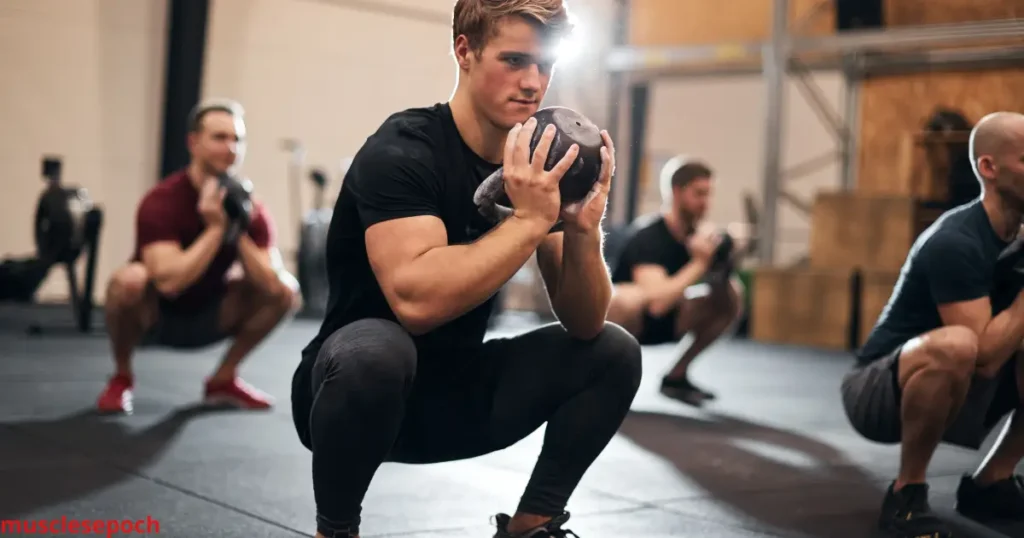
Dumbbell Goblet Squats and Walking Lunges are two foundational leg exercises that are perfect for building lower body strength, balance, and muscular endurance using minimal equipment. Whether you’re training at home or in the gym, these moves can deliver powerful results with just a single pair of dumbbells.
Dumbbell Goblet Squats
The goblet squat is a beginner-friendly, yet highly effective leg exercise. Holding a dumbbell close to your chest in a goblet-style grip forces you to maintain an upright torso, which not only targets your quads, hamstrings, and glutes, but also engages your core for stability.
Benefits include:
- Improved squat form and posture
- Strengthening of the lower body with less stress on the back
- Great carryover to everyday functional movements like sitting or lifting
How to perform:
Hold a dumbbell vertically against your chest, keep your feet shoulder-width apart, and squat down by bending your knees and pushing your hips back. Keep your chest up and heels grounded throughout the movement.
Walking Lunges
Walking lunges are a dynamic leg exercise that not only builds strength but also improves balance, coordination, and mobility. They engage your quads, glutes, hamstrings, and calves, while also challenging your core as you move.
Benefits include:
- Unilateral (single-leg) training for muscle balance
- Increased stability and joint strength
- Functional carryover to sports and real-world movements
How to perform:
Hold a dumbbell in each hand at your sides. Step forward with one leg and lower your hips until both knees are at 90-degree angles. Push through the front heel to bring your rear foot forward into the next lunge. Continue alternating legs as you “walk” forward.
Why These Exercises Work Well Together:
Combining goblet squats and walking lunges in your routine hits all major leg muscles while promoting muscle symmetry and joint stability. This duo is ideal for full leg development and makes an excellent superset for time-efficient workouts.
Dumbbell Curls & Overhead Triceps Extensions (Arms)
Focusing on arm development is essential for building a balanced upper body. Dumbbell curls and overhead triceps extensions are two foundational exercises that efficiently target both the front (biceps) and back (triceps) of your arms using minimal equipment. Whether you’re a beginner or at an intermediate level, these exercises are effective for sculpting defined, strong arms.
Dumbbell Curls: Strengthening the Biceps
Dumbbell curls primarily work the biceps brachii, the muscle responsible for flexing the elbow and turning the forearm. This movement also recruits smaller muscles in the forearms and shoulders for support and stability.
Benefits:
- Enhances the size and shape of the upper arm
- Improves grip strength and elbow stability
- Helps with everyday pulling movements
How to Do It:
- Stand or sit with a dumbbell in each hand, arms at your sides, palms facing forward.
- Keeping your elbows close to your torso, curl the dumbbells toward your shoulders.
- Pause at the top, then slowly lower back to the start with control.
Tip: Avoid swinging the weights—focus on strict form and full range of motion for maximum results.
Overhead Triceps Extensions: Targeting the Triceps
The overhead triceps extension focuses on the long head of the triceps, which is often under-targeted by other pushing exercises. This movement stretches the triceps in the starting position, allowing for a more powerful contraction.
Benefits:
- Isolates and strengthens the triceps
- Complements pressing exercises like bench press and shoulder press
- Improves arm definition and symmetry
How to Do It:
- Hold a single dumbbell with both hands and lift it overhead.
- Keep your elbows close to your ears and slowly lower the dumbbell behind your head.
- Extend your arms to lift the dumbbell back up, squeezing your triceps at the top.
Tip: Keep your core engaged and avoid arching your back for safe, effective movement.
Why Pair These Two Exercises?
Combining dumbbell curls and overhead triceps extensions in your routine allows you to train both major arm muscle groups in one session, promoting balanced development. This pairing not only improves muscle tone and size but also enhances joint function, stability, and everyday strength.
A simple starting point for most beginners:
- 3 sets of 10–12 reps each
- Rest 30–60 seconds between sets
- Perform 2–3 times per week on upper-body or full-body days
By maintaining consistency and gradually increasing the weight, you’ll notice improved definition, strength, and endurance in your arms over time.
Compound Moves – Deadlifts and Push Presses
Compound exercises like deadlifts and push presses are powerhouses in any workout routine, especially when targeting both legs and arms. These moves engage multiple muscle groups simultaneously, maximizing efficiency and promoting overall strength, muscle growth, and functional fitness.
Deadlifts: The King of Full-Body Strength
Deadlifts are one of the most effective compound lifts, targeting the hamstrings, glutes, lower back, traps, and forearms while also engaging the core for stability. Though often associated with leg training, deadlifts also heavily involve your grip and arm muscles, making it a perfect addition to a legs and arms workout.
Benefits:
- Builds total-body strength and power
- Improves posture and core stability
- Enhances grip and arm strength
- Burns a high number of calories due to large muscle engagement
How to Do It:
- Stand with your feet hip-width apart, barbell or dumbbells close to your shins.
- Keep your back straight, chest up, and engage your core.
- Bend at the hips and knees to grip the weight, then drive through your heels to stand up straight.
- Reverse the movement to return the weight to the floor with control.
Tip: Maintain a neutral spine throughout the lift to avoid injury. Focus on form over heavy weights, especially as a beginner.
Push Presses: Power and Coordination
The push press is a dynamic compound movement that targets the shoulders, triceps, upper chest, and core, while also recruiting the legs to provide explosive power. This makes it a fantastic full-body move that bridges the gap between strength and athleticism.
Benefits:
- Develops upper body pressing strength
- Builds explosive power and coordination
- Engages core muscles for balance and stability
- Increases cardiovascular challenge due to its dynamic nature
How to Do It:
- Start with dumbbells or a barbell at shoulder height, feet shoulder-width apart.
- Slightly bend your knees, then explosively extend your legs to help press the weight overhead.
- Fully extend your arms at the top, then lower the weight back down with control.
Tip: Keep your core tight and avoid overarching your lower back during the press.
Why Include These Compound Moves?
Deadlifts and push presses are efficient exercises that deliver maximum muscle recruitment in less time, making them perfect for routines combining legs and arms. They build foundational strength that supports performance in other lifts and everyday activities. Including these compound moves also promotes better hormonal responses, such as increased testosterone and growth hormone release, which aid muscle growth and fat loss.
For beginners, starting with lighter weights and mastering proper technique is crucial. As you progress, gradually increase the load and volume to continually challenge your muscles.
Beginner-Friendly Leg and Arm Routine (Home or Gym)
Resistance Band Glute Bridges + Triceps Kickbacks
Resistance bands are versatile, portable tools that can add effective resistance to your workouts without requiring heavy weights or machines. Combining Glute Bridges and Triceps Kickbacks with resistance bands allows you to target your lower body and arms simultaneously, making your workout efficient and effective.
Resistance Band Glute Bridges: Activate and Strengthen Your Glutes
The glute bridge is a foundational exercise that primarily targets the gluteal muscles, which include the gluteus maximus, medius, and minimus. Adding a resistance band around your thighs increases tension, helping you activate these muscles more effectively.
Benefits:
- Strengthens and tones the glutes and hamstrings
- Improves hip stability and mobility
- Helps prevent lower back pain by supporting pelvic alignment
- Enhances athletic performance by building powerful hips
How to Do It:
- Place a resistance band just above your knees and lie on your back with your knees bent and feet flat on the floor, hip-width apart.
- Engage your core, then press through your heels to lift your hips toward the ceiling, squeezing your glutes at the top.
- Hold the position briefly, then lower your hips back down with control.
- Keep tension on the band by pushing your knees slightly outward throughout the movement.
Tip: Maintain a neutral spine and avoid overarching your lower back during the lift.
Resistance Band Triceps Kickbacks: Sculpt and Strengthen the Back of Your Arms
Triceps kickbacks focus on the triceps brachii — the large muscle on the back of your upper arm responsible for arm extension. Using resistance bands provides consistent tension throughout the movement, promoting muscle growth and definition.
Benefits:
- Builds stronger and more defined triceps
- Enhances arm strength for pushing movements
- Supports overall upper body balance and aesthetics
- Can be performed anywhere with minimal equipment
How to Do It:
- Stand with your feet shoulder-width apart and anchor the resistance band under your feet. Hold the band handles or ends with your palms facing inward.
- Bend your elbows to 90 degrees, keeping your upper arms close to your body.
- Extend your arms straight back by squeezing the triceps, then slowly return to the starting position.
- Keep your elbows stationary to isolate the triceps muscle effectively.
Tip: Control both the lifting and lowering phases to maximize muscle engagement.
Why Combine These Two Moves?
Pairing Resistance Band Glute Bridges with Triceps Kickbacks creates a balanced workout targeting both lower and upper body muscles without needing heavy equipment. This combo is ideal for beginners, home workouts, or anyone looking to add variety to their routine.
Resistance bands help maintain constant tension, enhancing muscle activation and endurance. Additionally, these moves improve muscular balance—strong glutes support better posture and movement, while toned triceps help with arm strength and aesthetics.
Bodyweight Squats + Incline Push-Ups Circuit
Combining Bodyweight Squats and Incline Push-Ups into a circuit is a fantastic way to build strength, endurance, and overall fitness using just your body weight. This pairing targets major muscle groups in both your lower and upper body, making it an efficient full-body workout that requires no equipment—perfect for beginners or anyone with limited access to a gym.
Bodyweight Squats: Foundation for Lower Body Strength
Bodyweight squats are one of the most effective exercises to target your quadriceps, hamstrings, glutes, and calves. They improve lower body strength, mobility, and stability while also engaging your core.
Benefits:
- Strengthens major lower body muscles
- Enhances balance and coordination
- Supports joint health and mobility
- Burns calories and boosts metabolism
How to Do It:
- Stand with feet shoulder-width apart, toes slightly pointed out.
- Engage your core and keep your chest lifted as you bend your knees and hips to lower into a squat position.
- Aim to lower until your thighs are parallel to the floor, or as deep as your mobility allows without discomfort.
- Push through your heels to return to standing.
Tip: Keep your knees aligned with your toes and avoid letting them collapse inward.
Incline Push-Ups: Upper Body Strength with Reduced Strain
Incline push-ups are a beginner-friendly variation of the traditional push-up. By elevating your hands on a sturdy surface like a bench, table, or countertop, you reduce the amount of body weight you’re lifting, making it easier to build strength gradually in your chest, shoulders, and triceps.
Benefits:
- Builds upper body strength and muscular endurance
- Easier on the wrists and shoulders compared to regular push-ups
- Prepares you to progress to standard push-ups
- Engages core muscles for stability
How to Do It:
- Place your hands shoulder-width apart on an elevated surface.
- Walk your feet back until your body forms a straight line from head to heels.
- Lower your chest toward the surface by bending your elbows, keeping them close to your body or slightly flared based on comfort.
- Push back up to the starting position.
Tip: Keep your core tight and avoid sagging hips to maintain proper alignment.
Why Combine Bodyweight Squats and Incline Push-Ups?
Performing these exercises in a circuit format means doing one set of bodyweight squats immediately followed by a set of incline push-ups with little to no rest in between. This approach maximizes workout efficiency by keeping your heart rate elevated, which helps with fat burning and cardiovascular health while simultaneously building muscle strength.
The circuit format also balances lower and upper body training, ensuring you develop full-body strength without the need for equipment or extensive gym time. It’s perfect for beginners looking for a simple yet effective workout or anyone wanting a quick home routine.
Superset: Lunges & Bicep Curls
A superset combining lunges and bicep curls is an excellent way to efficiently target both your lower and upper body in a single, time-saving workout sequence. This pairing enhances muscular endurance, strength, and overall calorie burn by working opposing muscle groups with minimal rest between exercises.
Lunges: Building Lower Body Strength and Stability
Lunges are a fundamental lower body exercise that primarily target the quadriceps, hamstrings, glutes, and to some extent, the calves. Unlike squats, lunges challenge your balance and unilateral strength (one leg at a time), helping to correct muscle imbalances and improve coordination.
Benefits:
- Strengthens and sculpts legs and glutes
- Enhances balance and core stability
- Improves functional movement and athletic performance
- Can be performed with body weight or added dumbbells for resistance
How to Do It:
- Stand upright with feet hip-width apart.
- Step forward with your right foot and lower your body until both knees are bent at about 90 degrees.
- Keep your front knee aligned over your ankle and avoid letting it extend past your toes.
- Push through your front heel to return to the starting position.
- Alternate legs or complete all reps on one side before switching.
Tip: Maintain an upright torso and engage your core throughout the movement.
Bicep Curls: Targeting the Arms for Strength and Definition
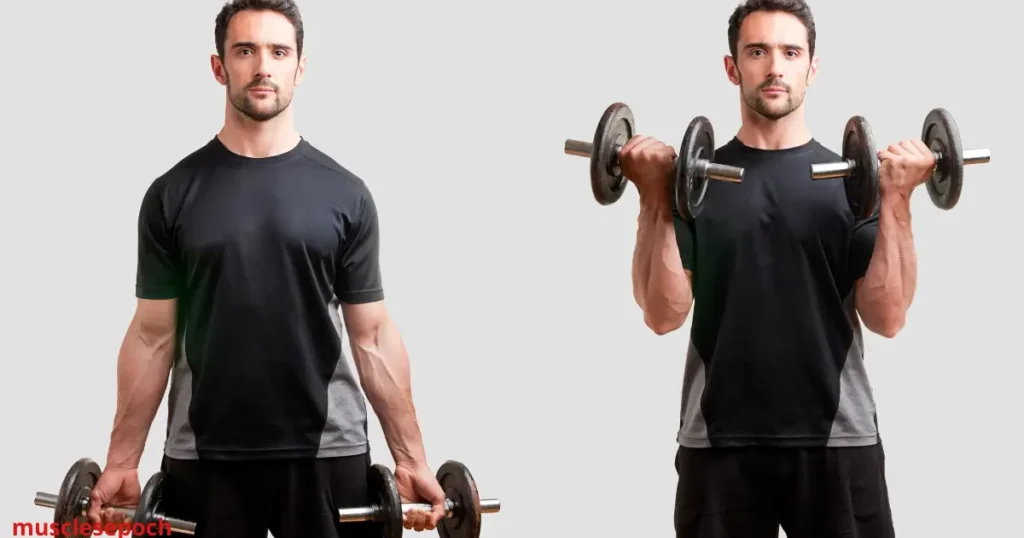
Bicep curls isolate the biceps brachii, the prominent muscles in the front of your upper arms. This exercise is key for developing arm strength, improving aesthetics, and enhancing your ability to perform pulling motions in daily activities and other workouts.
Benefits:
- Builds arm muscle strength and size
- Improves grip strength and forearm endurance
- Complements compound pulling exercises for balanced arm development
- Easily adjustable with different dumbbell weights
How to Do It:
- Hold a dumbbell in each hand with arms fully extended by your sides, palms facing forward.
- Keep your elbows close to your torso as you curl the weights upward by contracting your biceps.
- Pause briefly at the top, squeezing the biceps.
- Slowly lower the dumbbells back to the starting position.
Tip: Avoid swinging your body; keep the movement controlled for maximum muscle engagement.
Why Perform Lunges and Bicep Curls as a Superset?
Performing lunges and bicep curls back-to-back as a superset maximizes workout efficiency by alternating between lower and upper body muscle groups. This keeps your heart rate elevated, increasing calorie burn and cardiovascular benefits without needing extended rest periods.
Supersets also help prevent fatigue in one muscle group while the other works, allowing you to maintain intensity throughout your workout. This is especially useful for busy individuals looking to get the most out of limited workout time.
Sample Superset Routine:
- 12 Lunges per leg (with or without dumbbells)
- 12 Bicep curls (choose a weight that challenges you while maintaining good form)
- Rest 30-60 seconds
- Repeat for 3-4 sets
This superset builds strength, endurance, and balance, making it a powerful addition to any full-body or split workout routine.
Tips for Progress, Form & Recovery
Nutrition, Hydration, and Rest for Muscle Growth
Achieving muscle growth isn’t just about what happens in the gym — your nutrition, hydration, and rest play equally crucial roles in maximizing your progress. Without proper fuel and recovery, even the best workout routines can fall short of delivering results. Let’s dive into why these three pillars are essential and how to optimize them.
Nutrition: Fueling Muscle Repair and Growth
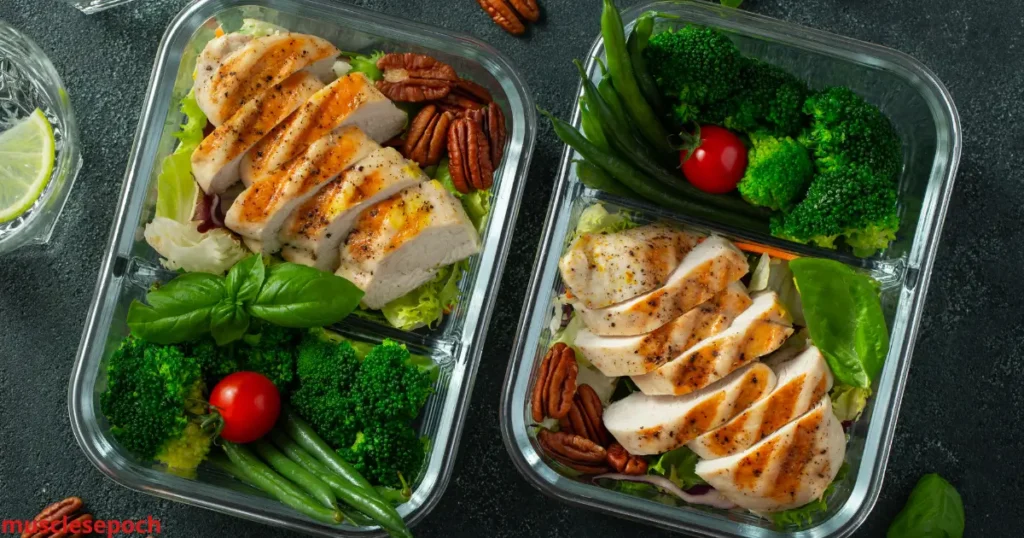
Muscle growth requires a positive balance of nutrients to repair the tiny tears caused by resistance training. Here’s what to focus on:
- Protein: The building blocks of muscle tissue. Aim for about 1.6 to 2.2 grams of protein per kilogram of body weight daily to support muscle synthesis. Include high-quality sources like lean meats, eggs, dairy, legumes, and plant-based proteins.
- Carbohydrates: Your muscles’ primary energy source during workouts. Adequate carbs help maintain performance and replenish glycogen stores post-exercise. Opt for complex carbs such as whole grains, fruits, and vegetables.
- Fats: Important for hormone production and overall health. Healthy fats from sources like avocados, nuts, seeds, and olive oil support recovery and immune function.
- Meal Timing: Eating protein-rich meals spaced throughout the day, especially post-workout, enhances muscle protein synthesis. A balanced meal or snack within 30–60 minutes after training is ideal.
Hydration: Supporting Performance and Recovery
Water is fundamental for nearly every physiological process involved in muscle growth:
- Muscle Function: Hydrated muscles contract more efficiently, which can improve strength and reduce injury risk.
- Nutrient Transport: Proper hydration ensures nutrients reach muscle cells effectively.
- Waste Removal: Water helps flush out metabolic waste produced during exercise.
Tips: Drink water consistently throughout the day, and increase intake around workouts, especially in hot or humid conditions. Consider electrolyte-rich fluids if exercising intensely or for long durations.
Rest: The Time When Muscles Actually Grow
Muscle growth happens primarily during rest, not during the workout itself. Quality sleep and recovery periods allow your body to:
- Repair and rebuild muscle fibers damaged during training
- Regulate hormones like growth hormone and testosterone that aid muscle growth
- Restore energy stores and reduce inflammation
Sleep: Aim for 7-9 hours of uninterrupted sleep each night. Poor sleep can impair recovery, reduce performance, and increase injury risk.
Active Recovery: Incorporate light activities like walking, stretching, or yoga on rest days to promote blood flow and muscle repair without overtaxing your system.
Putting It All Together
For optimal muscle growth, combine a well-balanced diet rich in protein and complex carbs, consistent hydration, and ample rest. Skimping on any of these elements can stall your progress, no matter how hard you train.
Remember, your workout is only one piece of the muscle-building puzzle — fuel your body properly, stay hydrated, and respect your recovery to build stronger, leaner muscles effectively.
Progressive Overload with Dumbbells or Bands
Progressive overload is a fundamental principle in strength training and muscle building. It involves gradually increasing the demands placed on your muscles to stimulate continuous growth and strength gains. When using dumbbells or resistance bands, applying progressive overload might require a bit more creativity compared to machines or barbells, but it’s absolutely achievable and effective.
What is Progressive Overload?
Progressive overload means consistently challenging your muscles by increasing the intensity of your workouts. This can be done by:
- Increasing the weight or resistance
- Increasing the number of repetitions or sets
- Improving exercise technique or tempo
- Reducing rest time between sets
Applying Progressive Overload with Dumbbells
- Increase Weight Gradually: If you have access to adjustable dumbbells or multiple weight options, gradually move to heavier weights as you get stronger. For example, increase from 10 lbs to 12 lbs once you can comfortably complete your target reps with good form.
- Increase Repetitions or Sets: If increasing weight isn’t an option, try adding more reps per set or an extra set to challenge your muscles further.
- Slow Down the Tempo: Controlling the movement speed, especially during the lowering phase (eccentric), can increase muscle tension and difficulty without changing the weight.
- Add Variations: Modify exercises to increase difficulty, such as performing single-leg squats instead of regular squats, or adding a pause at the bottom of a curl.
Applying Progressive Overload with Resistance Bands
- Use Bands with Higher Resistance: Resistance bands come in varying tension levels. Progress to thicker or stronger bands to increase resistance as you grow stronger.
- Adjust Band Length: Shortening the length of the band (by holding it closer or looping it) increases tension, making the exercise more challenging.
- Increase Repetitions or Sets: Similar to dumbbells, adding reps or sets can help continue the overload stimulus.
- Combine Bands: Using two bands simultaneously or combining band resistance with dumbbells can amplify the challenge.
Tracking and Progression
Keeping a workout journal or using an app to record weights, reps, sets, and resistance band colors/lengths is crucial. It helps you monitor progress and ensures you’re consistently challenging your muscles.
Summary
Progressive overload with dumbbells or bands is all about smart adjustments—whether it’s increasing resistance, reps, or improving exercise control. Consistently applying these strategies will help you build strength and muscle effectively, even with limited equipment.
Maintain Proper Form to Avoid Injury
Maintaining proper form during your workouts is crucial not only for maximizing muscle engagement but also for preventing injuries. Whether you are using dumbbells, resistance bands, or performing bodyweight exercises, correct technique ensures that you target the right muscles and avoid placing unnecessary strain on joints, ligaments, and tendons.
Why Proper Form Matters
Poor form can lead to muscle imbalances, overuse injuries, and chronic pain. Common mistakes such as using momentum to lift weights, rounding the back during squats or deadlifts, or flaring the elbows during presses can cause damage over time. Proper form protects your body, allows safer progression, and helps build strength efficiently.
Tips for Maintaining Proper Form
- Start with Light Weights or No Weights: Especially for beginners, mastering movement patterns without heavy resistance is key. This allows you to focus on the technique before adding load.
- Engage Your Core: A strong and engaged core stabilizes your spine and pelvis, reducing the risk of lower back injuries during exercises like squats, deadlifts, and presses.
- Keep Controlled Movements: Avoid jerky or rapid motions. Slow and controlled reps ensure muscles do the work rather than momentum, leading to better muscle activation.
- Maintain Neutral Spine: Always keep your spine in a neutral position — neither overly arched nor rounded — especially during lifts involving bending or twisting.
- Use a Full Range of Motion: Performing exercises through their full range of motion enhances flexibility and muscle activation while preventing joint stiffness.
- Avoid Locking Joints: Keep a slight bend in your knees and elbows during exercises to protect your joints from undue stress.
How to Check Your Form
- Use Mirrors: Watching yourself during exercises can help you self-correct posture and movement.
- Record Yourself: Filming your workout sessions allows you to review and spot errors you might not feel during the exercise.
- Ask for Feedback: If possible, get a trainer or experienced lifter to observe and guide your form.
Common Form Mistakes to Avoid
- Arching or rounding the back during deadlifts or squats
- Letting the knees cave inward during lunges or squats
- Using momentum to swing dumbbells instead of controlled lifting
- Overextending elbows during presses or extensions
- Not fully engaging the targeted muscles
Conclusion
Training your legs and arms together isn’t just a time-saver—it’s a powerful way to increase total-body strength, improve mobility, and enhance your metabolism. With the right mix of compound movements, isolation exercises, and proper recovery strategies, you can build muscle evenly and prevent imbalances. Whether you’re working out at home with dumbbells or in the gym with machines, this workout plan helps you stay consistent and motivated. Stick with it, apply progressive overload, and fuel your body right—you’ll be seeing results faster than you think.
